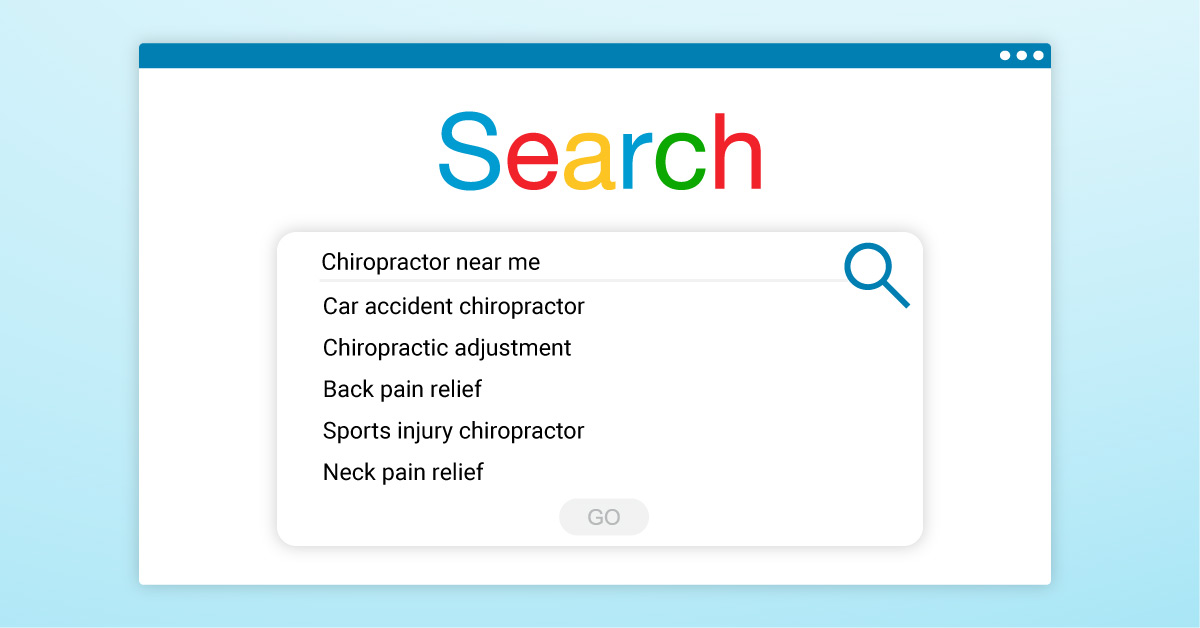11 Major SEO Trends You Need to Know in 2024
The SEO landscape is constantly changing. Understanding the latest trends can put you ahead of the competition. So what is the future of SEO? If you want your web pages to rank organically on Google, search engine optimization (SEO) is vital to your digital strategy. If you want a stellar SEO strategy, familiarize yourself with the latest SEO trends.
Here are 10 of the latest SEO trends you should know about.
1. Increased Importance of First-Hand Experience and Author Expertise

If you want your website to rank high on a search engine results page, you should improve your website’s E-E-A-T signals. What exactly does this mean? E-E-A-T stands for Experience-Expertise-Authoritativeness-Trustworthiness. This is a critical component in Google’s Search Quality Rater Guidelines, which people use to assess search results. Fundamentally, search engines like Google judge the core web vitals to determine the credibility of the website, author, and pages.
While E-E-A-T isn’t considered a direct ranking factor for search engines, Google wants to serve results with strong E-E-A-T, which significantly matters. Why? This can help improve user trust and lead to more conversions.
Google’s guidelines prioritize informative content containing first-hand experience over generic information. For example, an article on the latest advancements in cancer treatment will be prioritized if authored by an oncologist or medical researcher, not just a health and wellness writer.
To prioritize EEA and its ranking factor, brands can publish expert-authored quality content to increase their search engine rankings and build trust with their audience. They can also showcase the author’s credentials to give readers a background on the author and what makes them a credible source. They must also include reputable resources in the articles to establish their authority. In a nutshell, SEO trends like E-E-A-T mean prioritizing unique expertise over generic content.
2. Rise of AI Tools for SEO Tasks

Other popular SEO trends include the emergence of artificial intelligence or AI-generated content. Now, brands can utilize AI tools to simplify and streamline SEO tasks, including workflows and processes.
Large Language Models, or LLMs, and chatbots can help brands create content and provide the foundation for in-depth articles written by experts. While AI-generated content may not always be perfect, it provides a solid foundation on which brands can build.
AI tools can also be used for research, advanced analytics, and better technical SEO. Even if articles are written by human writers, AI tools can help check their grammar and verify plagiarized content so that everything published on the website is unique.
For tasks like keyword research, brands can use tools like ChatGPT, SEOSurfer, Ahrefs, and SEMRush. While there are free tools brands can use, investing in paid AI tools can help them fortify their SEO efforts in the long run.
From researching the best keywords to reach one’s target audience to helping fine-tune old content, AI tools can make a brand’s SEO campaign so much easier.
3. Dominance of UGC
User-generated content, or UGC, can help brands boost the content value on their pages by providing new perspectives and engaging information for others. It can reinforce user confidence and improve SEO and conversion rates.
Common types of UGC that brands can use on their website include tagged content on social media, ratings and reviews, forums, and communities like Reddit and Quora. While UGC may cause some lack of quality control, more people have preferred social proof when searching online. Moreover, people have shown a preference for social proof with high user engagement. The more popular the content is, the more likely people will trust it.
To generate more UGC content, brands can strengthen their online community and encourage more interaction from their audience. The more people comment or react to a website’s content, the likelier users would perceive it as worthwhile and trustworthy.
That’s why, nowadays, brands must produce genuine value for their audience. They should understand their market needs to fill the gap and provide content to fill them.
4. Optimizing for Search-Generated Experiences (SGE)

As mentioned, AI has been instrumental in today’s marketing landscape. Google has used AI to provide users with better-quality content. Google’s Search Generative Experience (SGE) is its updated search landscape. Instead of traditional SERP results, SGE utilizes generative AI to provide users with clear and quick overviews of their search queries. This is so they won’t have to click on individual websites.
So, how can brands optimize their pages with SGE in mind? Brands can answer user queries directly by structuring web pages with clear hierarchies, concise summaries, and scannable formatting. The website should be easy to read and navigate, with structured data for people’s convenience.
By formatting pages to be clearer and easier to scan, they have a better chance of being featured in SGE results.
5. Increased Focus on User Signals
Search engines increasingly prioritize user signals and engagement metrics over merely content analysis. User signals are specific behaviors that users display when interacting with a website or web page. Each behavior is considered a signal of how the user receives that web page.
In turn, these signals are indicators of user engagement and satisfaction. Signals are quantified as a rate and can be measured in various ways, including site analytics apps and website cookies.
To focus on user signals, brands can increase user interactions through interactive content. They can create content encouraging audience participation, like quizzes, polls, and calculators.
A visually appealing web design can also help websites increase people’s time on each page, reduce bounce rates, and amplify conversions. In short, brands should ensure that the organic traffic they attract on their website stays on each page for a while before exiting.
6. Evolution of Featured Snippets

Featured snippets are short text snippets appearing at the top of the search engine results page to answer a user’s query quickly. This content is pulled from web pages in Google’s index. Nowadays, Google has been experimenting by providing multiple snippets for a single query.
Brands have a higher chance of appearing in featured snippets by optimizing their content into paragraph, list, table, and video formats that directly answer user questions. While brands can’t mark their pages as featured snippets for search engines, they can elevate their chances with formatting and straightforward answers to people’s concerns.
7. Growing Importance of Video SEO
Nowadays, video content dominates search results, especially for how-to and tutorial queries. Video SEO is the process of optimizing video content so it ranks highly when users search for content about that video’s subject. This helps ensure people click on your video instead of your competitor’s.
There are various ways to take advantage of this SEO trend and its potential impact on search volume. First, you must create videos on topics people are interested in within your brand’s niche. Your videos should answer common product or service questions. Aside from being high-quality content, the videos should have optimized titles, descriptions, and tags with relevant keywords. This would make ranking these videos on search results easier for search engines.
The videos produced should be accessible using a mobile device or a computer. Moreover, they should be shareable so that others can view them easily. It should also be transcribed and closed-captioned so that people can understand the content easily.
8. Importance of Search Intent and Zero-Click Searches

Search intent refers to the user’s primary goal when typing a query into a search engine. Common search intents include navigational, transactional, informational, and commercial. Understanding a target audience’s search intent is crucial to keeping leads on one’s web page. If brands produce valuable content on their website that thoroughly answers their queries, they won’t have to refer to multiple websites to find what they need.
An example of commercial intent would be “buy drone camera under $1000” while an informational search would look like “How many seeds does an apple have?”
To optimize search intent, brands should consider the content type, format, and angle. The content they produce should align with these factors to provide more value. They should also analyze common themes that their audience is interested in so they can provide content that covers them.
Meanwhile, zero-click searches refer to results that directly answer a user’s query on the SERP, so they won’t have to click a link. To encourage more people to explore websites despite the prevalence of zero-click searches, brands should target the right keywords. They should also improve the content’s readability while thoroughly answering people’s queries.
The key to providing more value over others is to analyze top-ranking pages for target keywords. This would make it easier for brands to determine how to make themselves unique and offer more value to their market.
9. Brand Preferences

Among the SEO trends that probably won’t thrill small companies is search engines’ increasing favoring of large brands over niche websites, regardless of the website’s content quality. Sites like Forbes and Outlook India are virtually ranking for all kinds of keywords.
That’s why small companies should focus on brand building to rank higher than their competitors. Overcoming this particular challenge takes a long-term strategy, but the effort will be worth it when more organic traffic comes to their website.
10. Parasite SEO
Parasite SEO, or parasitic SEO, is an SEO strategy that leverages the authority and audiences of established websites to improve the ranking of other websites. By creating content on these high-ranking domains, brands can piggyback on their authority and rankings so their website would rank higher in search engine results.
This strategy can be carried out in several ways, including publishing content on authoritative websites like LinkedIn Pulse and Medium. While brands should supply valuable content on these platforms, they should remember to always link back to their websites so more people can discover them. This strategy can improve core web vitals.
11. A Rise in Voice Search
It’s worth noting, that voice search has gained in popularity as a method of users search queries on mobile devices. To support your organic traffic, knowing how to optimize local keywords used in a voice search can further support your search engine results pages. To better understand user behavior, it’s important to acknowledge that how we speak often differs from how we write when using traditional search engines.
Take some time to research keywords on voice data and how you can incorporate these into your SEO content strategy. Or hire SEO professionals to save your practice time on collecting data on user interactions for voice search optimization. The future of SEO will continue to evolve, but voice search will likely stick around.
Stay Ahead of the Trends with iMatrix
Navigating SEO trends can be challenging with the proliferation of E-E-A-T, and zero-click searches. Fortunately, brands don’t have to learn SEO tactics like voice search and core web vitals from scratch. Keep up with SEO trends and more content marketing resources on our blog page.
Considering how fast Google and the SEO industry are moving, you need expert partners like iMatrix to help you understand these trends and ensure that your website remains relevant and ranks higher on search results. For more information on digital marketing packages to improve your SEO efforts, call 800.792.8384 or click here.



